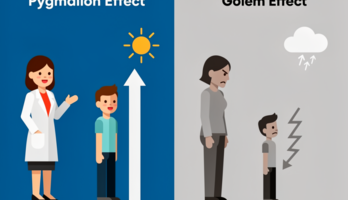Thompson - Computing for Scientists and Engineers (523188), страница 10
Текст из файла (страница 10)
The analysis of this example is similar to the first one.40COMPLEX VARIABLESFIGURE 2.6 Frequency trajectory in the complex plane for the Lorentzian amplitude describedby (2.67).Exercise 2.18(a) Show that the Lorentzian amplitudes in (2.67) satisfy(2.68)so that the trajectories of L± lie on circles of radius l/2 in the complex plane.(b) Investigate the details of the trajectory by showing that L+ describes the anticlockwise semicircle in the lower half plane, while L- describes the clockwisesemicircle in the upper half complex plane.
For both of these trajectories the directions are for going fromtonThe trajectories of the Lorentzian amplitudes are shown in Figure 2.6. They arediscussed more completely in Chapter 3 of the text by Pippard in the context ofCole-Cole plots of complex-valued dielectric constants as a function of frequency.In both of our examples the trajectories in the complex plane lie on circles. Thisis neither a mere coincidence nor is it uncommon, as the following exercise shouldconvince you.2.4 PHASE ANGLES, VIBRATIONS, AND WAVES41Exercise 2.19Consider the following complex function z, called a linear fractional transformation of the real variable p according to(2.69), and are complex constants, within which0. Now consider thez’thatisobtainedfromzbytheshiftandscalingtransformationfunction(2.70)By analogy with the result in Exercise 2.18, argue that z’ lies on a circular trajectory and therefore that the original z in (2.69) lies on a circular trajectory.
nThus, the functions (2.67) and (2.69) are both special cases of the more general circular trajectory given by (2.70). From these examples we see that the notion of atrajectory in the complex plane is useful for visualizing the properties of complexvalued functions.2.4 PHASE ANGLES, VIBRATIONS, AND WAVESThe angle in the complex plane often has interesting interpretations in scientificapplications, particularly in the context of vibrations and waves. In this section wesummarize some of the main results. An encyclopedic treatment is provided in Pippard’s book on the physics of vibration.The topics introduced here are developed and applied throughout this book.
Inparticular, Section 8.1 discusses free-motion and resonant vibrations in mechanicaland electrical systems, then the quantum oscillator is considered briefly in Section 8.5. In Chapters 9 and 10 we develop Fourier expansions, emphasizing thecomplex-exponential treatment for the discrete, series, and integral expansions.Phase angles and phasorsSuppose that we have a (real) angle = , where is a constant angular frequency,= 2 f (with f the frequency) and t denotes time.
Then(2.71)42COMPLEX VARIABLESdescribes in the complex plane uniform circular motion of the point z1, while theprojections onto the real and imaginary axes (x and y) describe simple harmonic motions.Exercise 2.20Prove that the motion of z1 is periodic by showing that(2.72)where the period T = 2nIf a second uniform circular motion in the complex plane is described by(2.73)then this motion has the same period as that described by z1, but at a given time z2has its phase advanced by over the phase of zl.Whether one refers to a positive value ofas a lag or a lead depends on the scientific field in which one is working. If> 0, in mechanics the phase of z2 is saidto lug that of zl, whereas in electrical-circuit applications z2 is said to lead zl.A complex-plane diagram showing the magnitude of z and a relative phase (witht usually suppressed) is called a vibration diagram or phasor diagram.
Its usegives a visualization of complex-variable relationships which often improves comprehension and interpretation.Vibrations and wavesWe can broaden the discussion of phases to include both spatial as well as temporalvariation in the amplitude of a complex vibration. For example, a wave that has constant amplitude of unity at all points along the x direction and at all times t can be described by(2.74)in which the wavenumber, k, is given in terms of wavelength, λ, by(2.75)Although the wavenumber is physically a less intuitive quantity than is the wavelength, computationally and in most applications k is a much simpler quantity to dealwith.
Note that k has the dimensions of an inverse length, just as the angular frequency, has the dimensions of inverse time. Thus, the argument of the exponential function in (2.74) is dimension-free, as should be the argument of any functionin mathematics.2.5 DIVERSION: INTERPRETING COMPLEX NUMBERS43Recall also that the wave described by (2.74) is monochromatic (unique valuesof and k) and that points of constant phase have an associated phase velocity, vp,given by(2.76)Exercise 2.21Discuss from the viewpoint of wave motion why vp in (2.76) is called the phasevelocity.
nThe superposition of such waves of constant phase to build up a dispersive wave inwhich components with different frequencies transport energy at different speeds isan extension of the Fourier expansions in Chapters 9 and 10. A comprehensive andlucid discussion is given by Baldock and Bridgeman in their book on wave motion.In Chapters 9 and 10 on Fourier expansions we make detailed study of phenomena described in terms of x or in terms of the complementary variable k, or in termsoft and its complementary variableClear expositions of the relations betweencomplex exponentials and vibrations are given in detail with many applications inPippard’s omnibus book. Vibrations and waves are described very completely at anintroductory level in the book by Ingard.2.5 DIVERSION: INTERPRETING COMPLEX NUMBERSThe development of the interpretation of complex numbers provides an example ofthe consequences of education and of the dominance of scientific thought by mathematical representations.
Since many scientists claim that a phenomenon is not understood until it can be described mathematically, it is interesting to discuss the relationbetween “the queen and servant of science” and the natural sciences.Are complex numbers real?Before the quantum physics revolution of the 192Os, scientists usually apologizedfor using complex numbers, since they provided only mathematically convenientshortcuts and shorthand for problem solving. Indeed, Leonard Euler of Euler’s theorem in Section 2.3 coined the Latin “imaginarius” for the quantity i = . Thefirst major use of complex numbers was made by C. P.
Steinmetz (1865-1923), aresearch electrical engineer who used them extensively (as we do in Section 8.1) tosimplify the analysis of alternating-current circuits.In quantum mechanics, for example in the Schrödinger equation that we use inSection 8.5, the wave function is fundamentally a complex variable that is not ashorthand for two real quantities such as magnitude and phase. Many quantities derived from wave functions, such as scattering amplitudes, are also intrinsicallycomplex-valued. This leads to the scientific use of “analytic continuation,” a conceptand technique familiar in mathematics but of more recent use in the natural sciences.44COMPLEX VARIABLESAnalytic continuationWe have displayed in Figures 2.3 and 2.4 the circular functions and the hyperbolicfunctions, respectively. In terms of complex variables, however, these hyperbolicfunctions are essentially just the circular functions evaluated for purely imaginary arguments, or vice versa.
It is therefore interesting, and sometimes useful, to think ofthere being just a single set of functions, say the circular functions, which may beevaluated along the real axis (then they are the conventional trigonometric functions)or they may be evaluated along the imaginary axis (then they are the hyperbolicfunctions, within factors of i), or they may be evaluated for the argument whichtakes on a value anywhere in the complex plane.When we make this last bold step off either the real or the imaginary axis andinto the complex plane we are making an analytic continuation of the functions.The concept of analytic continuation and some understanding of the techniquesapplied to it are best appreciated by working the following exercise.Exercise 2.22Consider the behavior of the complex-valued function of complex-variable argument, Z, defined as follows:(2.77)(a) Show that for a real argument A is just the hyperbolic cosine function discussed in Section 2.3, while for purely imaginary z it is the circular cosinefunction.(b) Sketch the graph of cos x along the real axis of the complex-z plane andthe graph of cosh y along the imaginary axis of the same plane.
They lookquite different, don’t they?(c) Devise a graphical representation of A (z) that is suitable for arbitrary complex z, and make some representative sketches of the function thus graphed.One possible form of representation is to sketch contours of constant Re A andof constant ImA. nIn scientific research analytic continuation is often a useful technique. As an example, experiments on wave scattering (such as in acoustics, optics, electromagnetism, and subatomic physics) are, at best, obtained in the range of scattering angles from zero to . How would the data look if they could be analytically continued into the complex-angle plane? Similarly, data obtained at real energies or frequencies may be interesting to extrapolate to complex energies or complex frequencies.
















